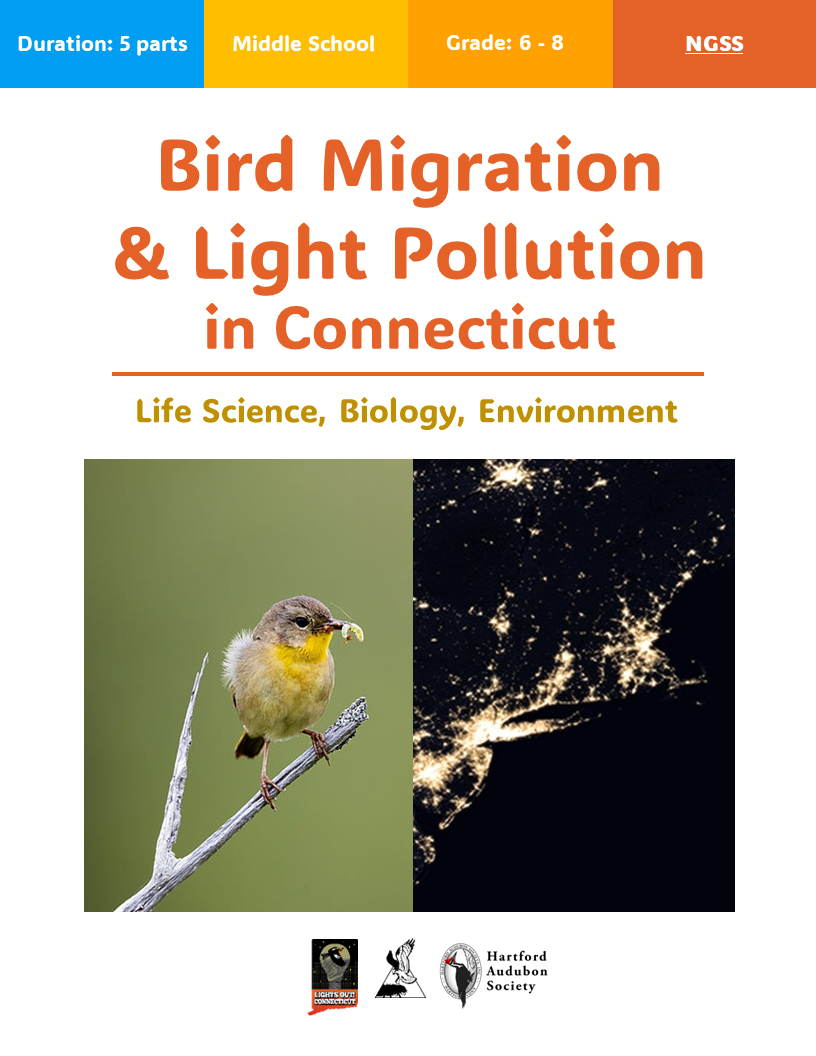Bringing “Bird Migration & Light Pollution in Connecticut” into Science Classrooms
Lights Out Connecticut has published a free new lesson plan on "Bird Migration & Light Pollution in Connecticut" for middle-school science classrooms in Connecticut. Its launch on August 15 was timed with the start of peak fall bird migration in the Northeast.
The five-part lesson plan, which meets Next Generation Science Standards, is designed for exploration and learning about the impacts of light pollution on migratory birds in Connecticut. Light pollution negatively affects many species of migratory birds that fly through Connecticut, especially migratory songbirds. It identifies specific learning goals, objectives, and activities for students, providing both direction and pace for the learning process. It also serves as a roadmap for educators with sequential learning objectives and thoughtful handout materials.
It can be downloaded for free at www.lightsoutct.org/lessonplan.
The curriculum equips students with age-appropriate information and critical thinking skills to answer questions like why do birds migrate, what species of birds migrate through Connecticut, what kinds of challenges they face during migration, and what can be done to help protect them.
The curriculum was designed by Catherine Ferreri, a sixth-grade science teacher at Coleytown Middle School, in Westport, CT, who has a background in biology and the environment. Meredith Barges, a bird-friendly building expert and co-chair of Lights Out Connecticut, collaborated on the development and design of the project. The project was funded by the Hartford Audubon Society and individual donors to Lights Out Connecticut.
Educators who wish to adapt the curriculum for their students and classroom goals are encouraged to downloade the PDF as a word-processing document and make modifications directly to the main document and handout materials.
Lights Out CT hopes that by increasing learning and engagement by young people about bird migration—and the challenges migratory birds face as a result of light pollution—will inspire greater care for migratory birds and meaningful, lasting change.
For more information about the curriculum, e-mail contact@lightsoutct.org

